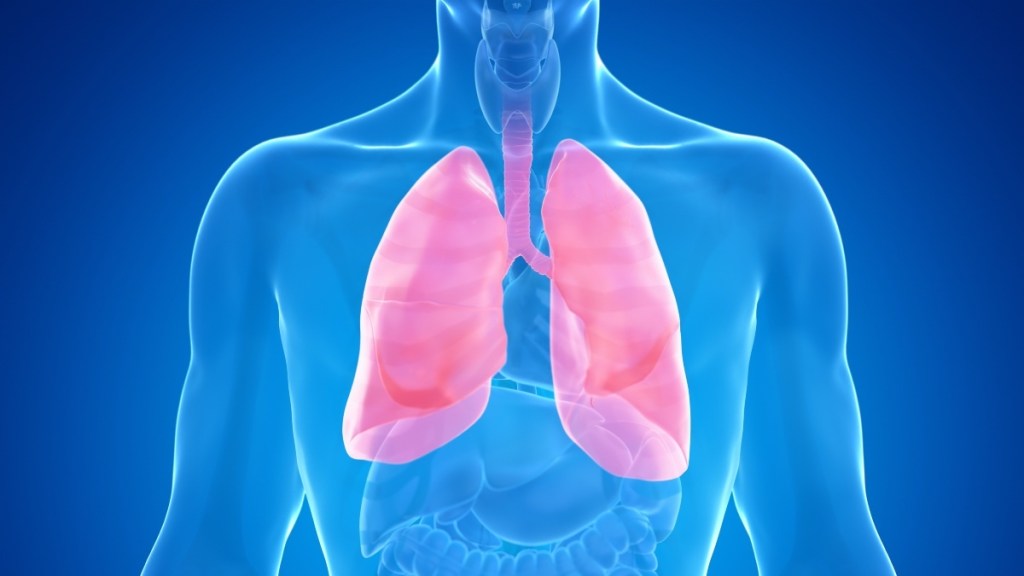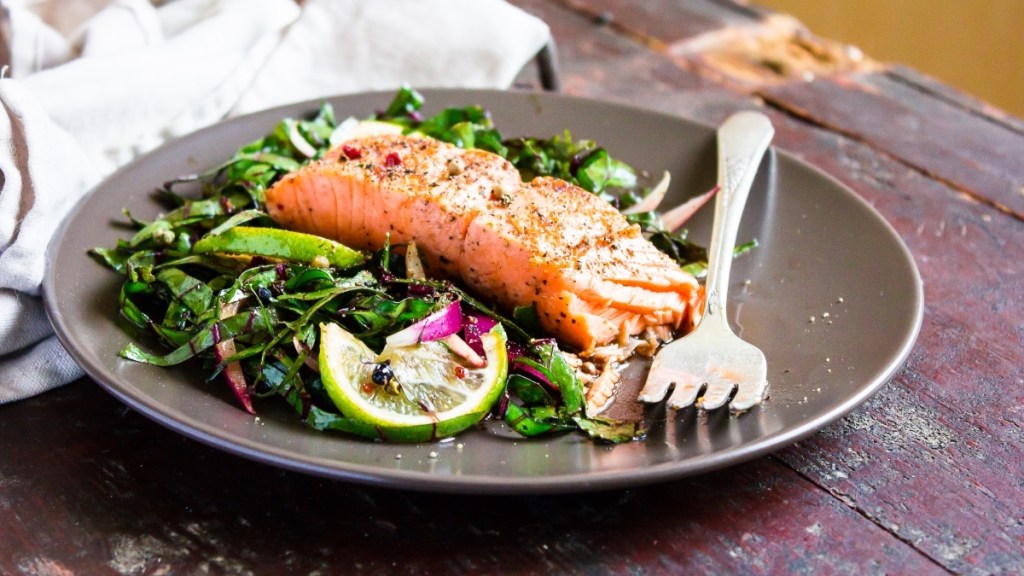These 6 Simple COPD Self-Care Tips Can Help You Breathe Easier, Experts Say
See the surprising thermostat tweak that a pulmonologist says may curb flare-ups

Finding out that you or a loved one has chronic obstructive pulmonary disease (COPD) can feel overwhelming. But the good news is that simple strategies for COPD self-care, along with following your prescribed treatment plan, can make a big difference.
“COPD isn’t a curable disease, but it’s definitely manageable,” assures Sucharita Kher, MD, a pulmonologist at Tufts Medicine in Boston, MA. “If you manage it right, you can live for a long time.”
So what exactly should you be doing when it comes to COPD self-care? Here, experts share how to keep your lungs healthier so you can breathe easier.
What Is COPD?
COPD is the umbrella term for chronic lung conditions like emphysema and chronic bronchitis marked by airflow blockage and breathing problems. It happens with a person’s airways become narrow and inflamed. COPD can cause symptoms including:
- Shortness of breath, especially when you’re active
- Wheezing
- Chest tightness
- Coughing and mucus
- Fatigue
- Frequent respiratory infections
The most common cause of COPD is environmental exposures that, over time, cause the airways to become damaged, Dr. Kher explains. Cigarette smoke is the biggest culprit, but heavy exposure to air pollutants can also be to blame. Less often, genetics and respiratory infections may factor in, too.

COPD stages
COPD is a progressive disease, meaning it gets worse over time. Thankfully, you can slow the rate significantly by taking care of your lungs with healthy lifestyle habits and the right prescription meds, Dr. Kher says.
Doctors divide COPD into four stages. These stages are based on lung function tests that measure your forced expiratory volume (FEV1), or the amount of air that comes out during the first second exhaling.
- Mild COPD (stage 1): FEV1 of 80% or higher
- Moderate COPD (stage 2): FEV1 between 50% and 79%
- Severe COPD (stage 3): FEV1 between 30% and 49%
- Very severe COPD (stage 4): FEV1 less than 30%
COPD self-care strategies
Bronchodilator inhalers are a cornerstone of COPD self-care treatment. “They dilate the airways to help you breathe better,” explains Dr. Kher. They’re available by prescription. If you or a loved one has symptoms of COPD, start by seeing your doctor to determine whether you need a bronchodilator. And if so, when and how often it should be used.
That said, inhaled meds are just one part of COPD self-care. “Other components of therapy include behavioral and lifestyle changes,” Dr. Kher says. Here are 6 easy, effective COPD self-care strategies that you can start implementing today.
1. Try ‘pursed lip breathing’
Deep breathing exercises can make it easier to get through bouts of breath shortness, plus improve your breathing over time. “They can make your lungs more efficient, reduce shortness of breath and improve your quality of life,” says Lesley Coleman, RRT, a respiratory therapist at Methodist Le Bonheur Healthcare in Memphis, TN. “It’s like giving your lungs a workout.”
If you’re new to COPD breathing exercises, it’s worth asking your doctor about pulmonary rehabilitation. This is a type of structured exercise program geared towards people with lung disease offered at most hospitals at lung centers. But you can also try them out at home.
A few favorites that Coleman likes to teach her COPD patients:
- Pursed Lip Breathing: Breathe in slowly through your nose (like you’re smelling a flower) for a count of 2, then breathe out slowly through your mouth for a count of 4 (like you’re blowing out a candle). Repeat for 5 to 10 minutes. Check out the video below for more information.
- Paced Breathing: Breathe in slowly for a count of 4, hold it for a moment then breathe out slowly for another count of 4. Repeat for 5 to 10 minutes.
Coleman recommends doing these exercises at least once a day for maximum benefit. “Some people find it helpful to do their breathing exercises in the morning as a way to start the day feeling refreshed,” she says. “Others prefer the exercises before bed to help them relax and fall asleep.” You can also use them as needed when you’re active or short of breath, she adds.
2. Enjoy a short stroll
A daily walk improves lung function and quality of life among COPD patients, found a study in Medicina. Regular aerobic exercise “can improve symptoms by training your body to use oxygen more efficiently,” Dr. Kher explains. And that can make it easier to do everyday tasks like climbing stairs, running errands or even kicking around a soccer ball with your grandkids.
Aim to work up to 30 minutes of strolling at least 3 to 4 days per week. As you stroll, inhale through your nose (it warms and filters the incoming air, making it gentler on your lungs) and exhale through your mouth with pursed lips. But don’t stress if that feels like too much right now. “Let your body be your guide” Dr. Kher says. “You can start off taking a slow walk for several minutes. If you feel short of breath, slow down or take a break.”
Also, get your doctor’s OK before starting an exercise program if you’re a beginner or if you’re recovering from a flare. They can let you know what’s safe for you. (Click through to see our favorite sneakers for spring.)
3. Eat like you’re in the Mediterranean
Savoring a leafy green salad topped with salmon is more than just delicious — it can give your lungs a boost with every bite. Diets rich in fruit, vegetables and fatty fish (like the Mediterranean diet) are tied to better lung function, according to a study in the European Respiratory Review. Protein-rich foods like salmon are also less likely to contribute to breathlessness compared to carb-heavy foods like pasta or pizza.

“As food gets digested, it produces carbon dioxide — and the body gets rid of carbon dioxide through the lungs,” Dr. Kher explains. “Carbs produce more carbon dioxide than protein and fat. So if your lungs are weak, they can be more difficult to handle.”
While you can’t go wrong eating more veggies and protein, Dr. Kher says nutritional recommendations aren’t one-size-fits-all for COPD patients. If you’ve got a few stubborn pounds hanging on, an eating plan that helps you lose weight might reduce breathlessness. If you’re underweight, a calorie-dense diet can help you hang onto more muscle mass and support better breathing.
Ask your doctor about meeting with a COPD nutritionist, who can help you put together an eating plan that works for you. (Click through to learn how the Italian Mediterranean diet can speed weight loss.)
4. Declare war on dust
If environmental irritants like dust make your symptoms worse, reducing your exposure as much as possible can help you breathe easier. One easy way to do that is by washing your sheets and pillowcases on the hottest possible setting at least once per week, Dr. Kher recommends.
Dust can settle in carpets, too. If your home is carpeted, set a time on your calendar to vacuum once a week, Dr. Kher recommends. If the chore is too taxing, ask a family member or friend to pitch in.
5. Throw open the windows
Cooking oil fumes are another irritant that can trigger symptoms in people with decreased lung function, according to BMC Public Health Research. An easy COPD self-care strategy: Get into the habit of opening the windows when you’re by the stove. Doing so is a two-minute trick that can help you ward off a flare by flushing out lung-irritating cooking fumes.

6. Adjust your thermostat
It turns out keeping your home a little cooler can ease strain on your lungs. Higher indoor temperatures tend to worsen COPD symptoms like coughing and phlegm, found a study in the Annals of the American Thoracic Society. “Some people say that their breathing is terrible on warm, humid days,” Dr. Kher notes. “Understanding what’s bothersome to you and focusing on that can help your symptoms.”
For more ways to breathe easier:
Activating These 7 Sinus Pressure Points Gets Rid of Pain Quickly and Naturally, Docs Say
These Teas Ease Allergies Naturally + the Timing Trick That Boosts the Benefit
Are Sinus Infections Contagious? Top MDs Answer This Surprisingly Tricky Question
This content is not a substitute for professional medical advice or diagnosis. Always consult your physician before pursuing any treatment plan.













